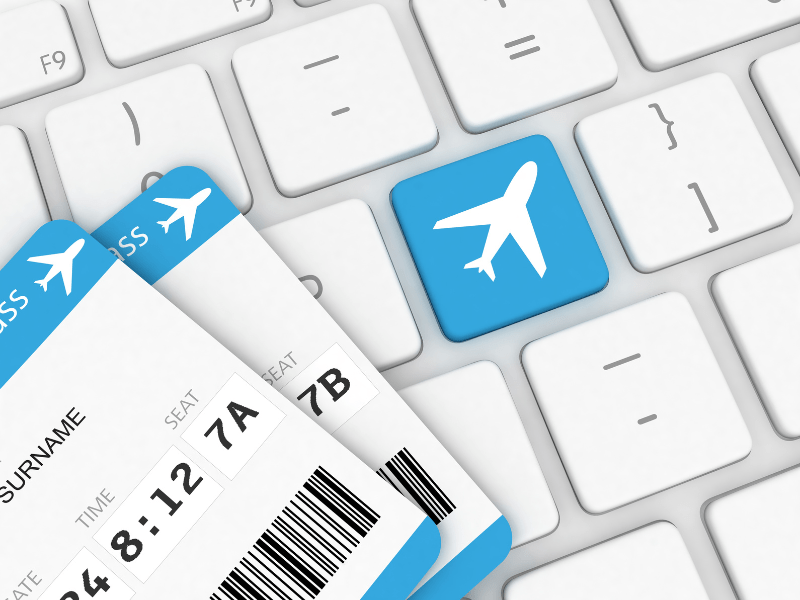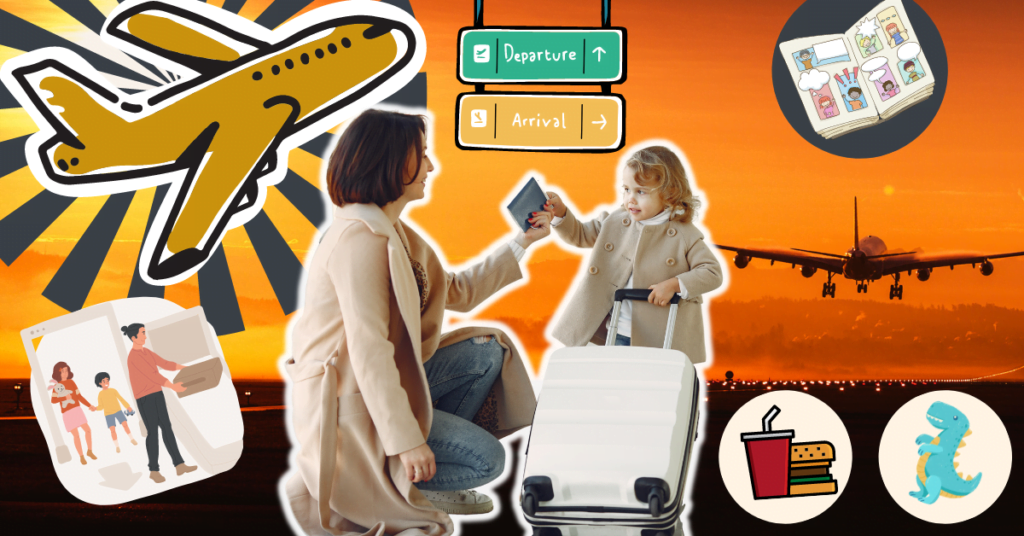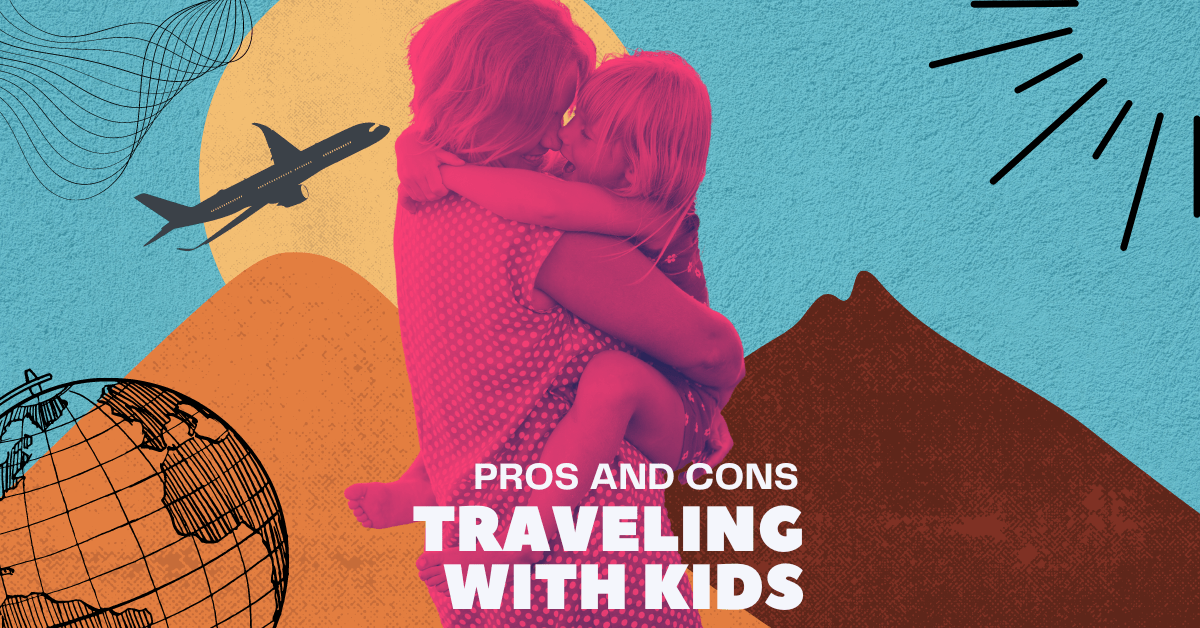Are you all stressed about managing jet lag with your kiddos? Are you going to land somewhere more than eight time zones away? Are you in a panic mode that your trip might be a disaster because of the utterly thrown-away sleep schedule in kids?
Fear not! Several times, I’ve crossed 9+ time zones at a stretch with my baby since she was one year old. And not once was she thrown out of her sleep schedule; now she is five.
My expat life ensures that we travel to and fro from the Western Hemisphere to the Eastern Hemisphere, crossing over several timezones each time we travel.
Kids beat jet lag faster than adults. Yes, it does take time but not too long. We just have to follow some simple and easy rules
A few tricks can help you and your adorable tiny ones overcome jet lags completely!
So, read along! Here we go!
What is jet lag?

When you cross several time zones at a fast pace, your body clock doesn’t understand the need to change its schedule by the local time.
The gap is created between the body clock and the local clock, which is known as Jet lag.
Jet lag can cause problems in falling asleep at night or wake you up in the wee hours of the morning.
Last time, I woke up at 3 for two days and couldn’t fall asleep until 6:30 in the morning when I was supposed to leave the bed.
Due to jet lag, you and your family can:
- have severe headaches,
- feel dehydrated,
- feel exhausted,
- have frequent mood swings
- suffer from digestion problems and/or an upset stomach.
- Feel grumpy and short-tempered, in short, all terrible things due to lack of sleep.
Before you Fly
1. choose your flight

I always choose a nighttime flight when traveling on a long-haul flight
(When given an option).
Nighttime long-haul flight means you’re starting at your bedtime, and so the kids can sleep during those 12 long hours, if not more.
My kid always sleeps on a nighttime flight because we ensure she is tired before the flight. That also means she has her dinner before the flight, and she misses the dinner on the flight because she falls asleep as soon as the flight takes off.
I usually save her meal for later.
In such a case, try waking them up after 7/8 hours. Let them stay awake, be aware of your destination’s local time, and try to push the routine towards it.
But you might also prefer to go on a flight that starts very early in the morning. That means you’ll have to be at the airport during the wee morning hours, which would mean a lack of proper sleep.
This might help your kid to fall asleep after some time because they will be exhausted. Again, if they don’t want to, they can grab the window seat if possible and may look out the window and enjoy the view through or above the clouds.
Though this applies to young kids, your toddler can also keep themselves engaged with other activities you should plan before boarding your flight! Especially after booking the flight.
If you choose an afternoon/evening flight, no worries. Well-rested but excited kids can follow their usual routines and be tired at the airport in the soft play area.
But here’s the catch. If you opt for a morning, afternoon, or evening flight, make sure to adjust your clock as soon as you board with the local time of your destination.
Try to follow the clock and shift their schedules, if that means foregoing a nap, be it so. Or maybe an extra hour or two of sleeplessness.
This will help you bring their body clock per the local time of your destination.
Do not stress on the old routine. Rather, try to adjust to the new routine.
Note:
But always remember, overtiring a kid or giving them too much sugar or screentime will only mess things up. It will agitate the brain and result in meltdowns.
Rather, plan before you go!
2. Adjust to the new time zone as early as possible.

I always prefer adjusting my kid’s body clock as soon as I board the flight.
Long-haul flights can be overwhelming, you just have to know how to survive them!
When at home, I have never pushed her off limits just so her body adjusts to the new time zone. That is completely unnecessary.
It not only disrupts her routine but makes her overwhelmed.
Since I prefer nighttime flights, I always stress that my kid has a proper dinner before boarding, and after take-off, she snores into her sweet world of dreams!
That way, she feels well rested, and the co-passengers don’t feel overwhelmed by continuous chatting or meltdowns.
But after 7/8 hours, I wake her up. This way, she is rested and, at the same time, lacks a few hours of sleep on the long-haul flight.
I let her sleep if she is willing to after she has been awake for 2 hours, and I wake her up after two/ three hours, and by that time, we have reached our stopover or destination.
This accumulation of lack of sleep will help any kid dose off once they get a comfortable bed at night.
What if you reach your destination in the morning or during mid-day?
Do not make yourself comfortable inside the room. You all might doze off, resulting in sleepless nights.
Instead, explore the outdoors.
Now, you would roll your eyes on this piece of advice. How can you even walk when those soft pillows and beds attract your body?
Here’s what I did when I reached my destination after covering ten blessed time zones early in the morning, around 4:30 a.m.
As soon as we reached home(my natives), we bathed, had breakfast, and dozed off for four long hours.
I had requested my parents and in-laws to wake me and my daughter up no matter what before lunch.
They did! We had our lunch. Chatted for a few hours and walked around the neighborhood.
When we were back, it was almost 6:30 p.m. We had our dinner around 7:30 p.m. and snored off around 8 p.m.
Though I’ll admit we were exhausted at 4ish in the evening, we had some chilled lemonade to boost our alertness, which worked wonderfully as planned.
We also did a little shopping, which lightened our near-grumpy mood. Retail therapy never fails!
Alike us, you can plan your itinerary accordingly for the day. Keep it very light. Hit the outdoors definitely, and do not forget that a chilled drink or water can help you stay awake! That’s how you can avoid unnecessary caffeine, which will not help you sleep at night.
3. Prepare your kids about the time difference

I have always loved explaining whatever happens during a journey to my kid. This always prepares her for the journey and the days about to come.
I have always talked about the time difference between India and the Americas. Now, she has a clear idea that when it’s night here at home, it’ll be morning in India.
So, the last time I traveled with my daughter, she knew that she would have a disturbed sleep schedule during the 1.5 days of the journey and that she would land in the wee hours of the morning.
She was perfectly fine throughout the journey, and since everything was explained before the journey, she never felt overwhelmed even though she was 12 and a half hours apart from her home time.
So, one thing that I would recommend is that you should also make your kid aware of the time difference. This will prepare them for the overwhelming difference in time and change in their daily routine.
4. Bring sleep accessories for comforting sleep

Many would suggest you bring sleep accessories for your kid.
You can bring a bed box for your kid to stretch their legs so that they can be comfortable.
Ask your doctor for melatonin pills for your kid so they can have undisrupted sleep during or after the journey to overcome jet lag.
You can also buy other available footrests to ensure comfort for your baby on the plane.
A well-rested baby might help you get through the jet lag.
But, if you think it through, a very well-rested baby/kid will not likely want to fall asleep when you are trying to set them to a routine in accordance with the local time.
Note:
I have never carried a bed box. Too much comfort inside the flight might result in a very well-rested kid who would not prefer sleeping at night.
I have also never given melatonin pills to my GP to calm her down. I always prefer planned natural process to make her fall asleep in a new time zone.
5. Be sure to stay hydrated

Jet lag and a long-haul flight with a little rest will make you feel dehydrated and grouchy.
During your long-haul flight, you are less likely to have enough water. So, ensure you have plenty of fluid during the first few days after you reach your destination.
Make sure that the kids, too, have enough water to keep their system hydrated and running.
You might want to drink cold water if your destination temperatures exceed your hometown. Drinking cold water is okay as long as it’s not bedtime.
Note: Always remember that cold water increases your alertness. So try having room-temperature water around your bedtime.
6. Split the duties among the partners

When traveling with your family, you might have one or two travel partners to assist you.
Plan with your partner to divide the duties at the airport, on the flight, and after you reach your destination.
This way, you should be able to take turns to rest.
When you need a shut-eye for an hour or two, you should be able to get it peacefully while the others in your family look after the kids.
If you’re traveling alone, sleep when you can, and do not invest your time in screens, which can lead to more exhaustion and a grumpy you!
After You Reach Your Destination
7. Choose a light itinerary at the beginning

In your initial days of travel, you shall be heavily jet-lagged. So, try to keep your itinerary very light.
Getting acclimatized to the new weather and time can take some time. Keeping your itinerary light will help you and the kids recover from your jet lag.
Though kids recover quickly, the caregivers should also feel better about guiding the children better in a new time zone.
It’s always a good choice to go around in the neighborhood for the first couple of days and let your body get used to everything new.
Moving around without too much walking or hiking will allow your body to follow the new schedule and recover. Also, return to your accommodation as needed during mealtimes, nap schedules, and bedtime.
This will help the kids to get a clear picture of the schedules they will follow.
8. Daytime and Nighttime

During the daytime, definitely go out and move around so that your body gets used to daylight. Eat out and explore local cuisines.
If your kids are too anxious to try something new, go for something comforting, but sit in the outdoor dining section if it’s pleasant outside!
Sunlight, when it touches your body, plays a lot of role in letting your cells know that it’s time to be active.
That’s the reason why you feel lethargic on a gloomy day. So hit the road and walk around when you reach a new time zone to let your body adjust to the day schedules.
Similarly, create a calm atmosphere at night using room darkening curtains, if possible, to let your body know it’s time for bed.
Try to avoid siestas or naps in the afternoon. This is true for your kids so that you can enjoy a proper deep sleep at night.
When the sun goes down at 9 p.m., it becomes difficult for the kids to fathom that it’s bedtime. So try to avoid being outside till late in the evening. When you reach your accommodation, draw the curtains and put on relaxing music if possible.
Avoid sugary food and drink during the bedtime of your kids at all costs and no screentime, please; it will only agitate the brain. Stay calm, read stories, have dinner, take a bath, and go to sleep.
You may have room darkening curtains if it’s a hotel or Airbnb. If it’s your homeland and your home, you would know what arrangements can be made to make the room dark.
Circadian rhythm can help you overcome jetlag naturally and faster only if you use daylight and darkness wisely.
9. Be patient and Flexible

Sometimes, you’ll achieve closely what you plan ahead, and sometimes it may go berserk.
Always remember that stressing about something never helps. Instead, start your routine afresh again.
With kids, you can never be sure what they will follow or won’t. Their body would take time to adjust to a whole new world of routine. Be it mealtime, bedtime, or poop time.
That’s really overwhelming for them already. So, go easy on them, but not on sugar and screen time during bed!
I know it would be overwhelming for you as well. Jet lag, jet-lagged kids, new routines, change of weather, itineraries… too much on your plate!
Take baby steps. Let go where you can. Hold your reins where you have to. But most importantly, be happy and patient. Patience is the key to success, even here.
Take rest when necessary and wake up when necessary. Use your good ol’ friendly mobile reminders and alarm to alert you about mealtimes and bedtimes.
Eat well. Sleep well.
It’s all about being happy during your trip and making many happy memories with kids.
With infants, all day, every day is the same, but as they grow, they become aware of their surroundings.
Let them explore their options at the same time, and remind them about their new schedules.
Choose your flight, prepare your kids, and plan ahead accordingly to avoid last-minute confusion. Stay hydrated, and use day and night to bring your system to rhythm.
Never forget to bring home good pictures and golden memories.
Jet lag is a temporary phase, but memories are forever.
Bon voyage, friends!










This article is really helpful. Specifically the Daytime and the nighttime section. I will try to follow it this time. Thank you.